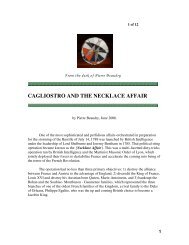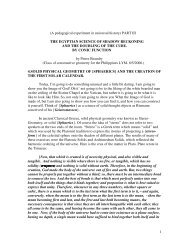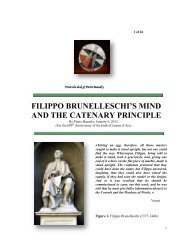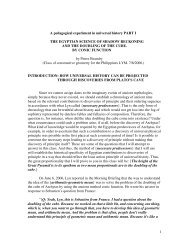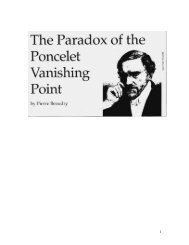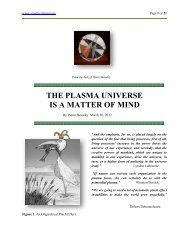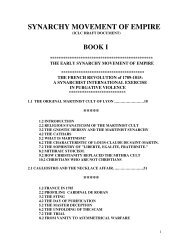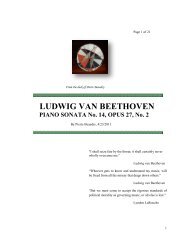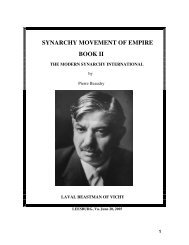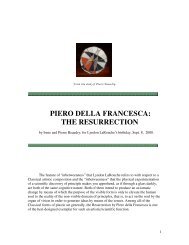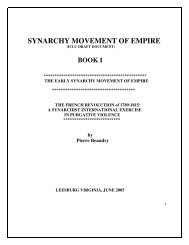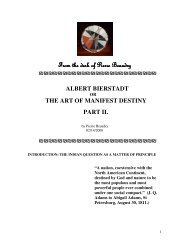LOUIS DE BROGLIE : THE WAVE AND PARTICLE PARADOX
LOUIS DE BROGLIE : THE WAVE AND PARTICLE PARADOX
LOUIS DE BROGLIE : THE WAVE AND PARTICLE PARADOX
You also want an ePaper? Increase the reach of your titles
YUMPU automatically turns print PDFs into web optimized ePapers that Google loves.
Therefore, you must think of the Mozart Sonata as a compositional dialogue with Bach’smind based on the idea of change expressed by the intention of all of the six human voices takentwo by two, and as occurring not in the notes as particles, but in the intervals of musical actionovertaking the notes as spiral waves overtake particles in De Broglie’s harmony of phases. Whatis developed is a self-generating process in which the particles are overtaken by their own wavespulling them toward a future resolution, like the waves that pulled Columbus toward America inthe pursuit of happiness. They are the same type of proportional self-generating motion.Those measures show the thematic creative material that Mozart transformed from theRicercare theme of the Bach Musical Offering. They indicate how only three types of spiralactions cover the entire range of the well-tempered system, the six human voices, and the 24 keysignatures. I have identified in Figures 3, 4, and 5, those three spiral actions. Each spiral showshow the Mozart harmony of phases is based on the underlying Lydian divisions of the octavesby half, and by half of the half, again, generating all minor thirds. When you listen to them in avariety of combinations, those divisions cause dissonances that require a resolution.Figure 4. The Lydian spiral action of four intervals between F#, A, C, E flat, F#.20




